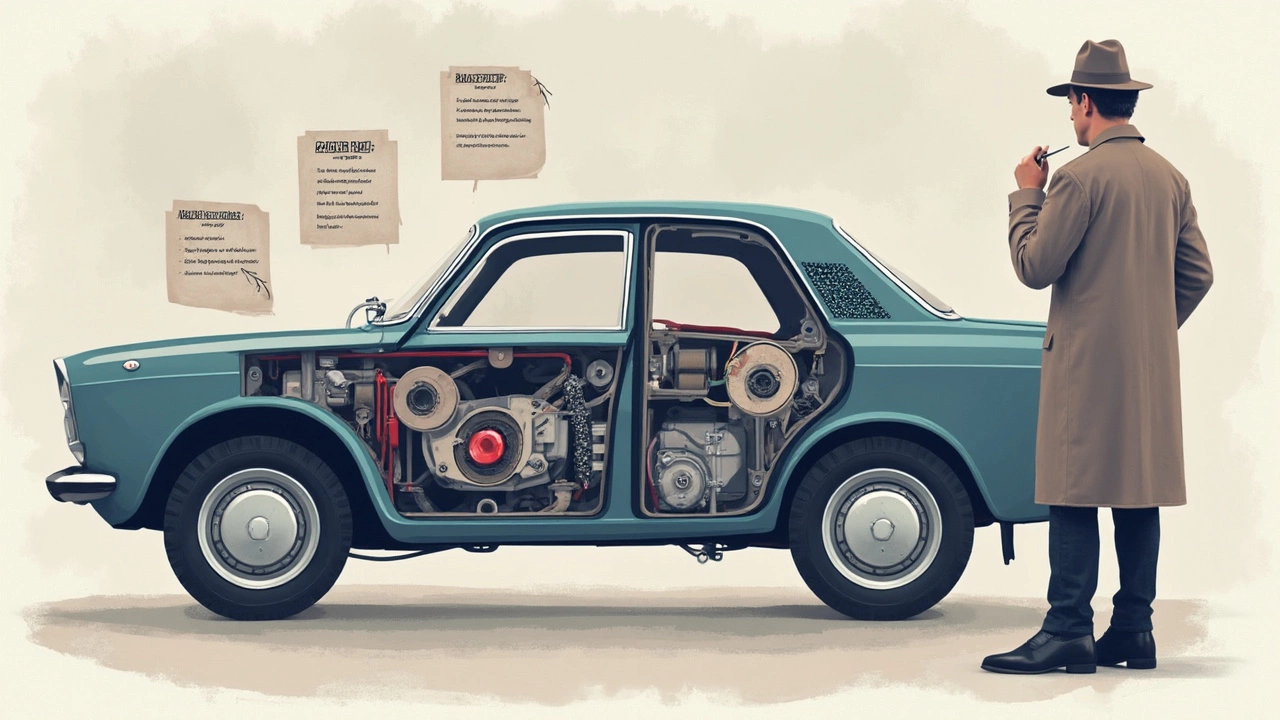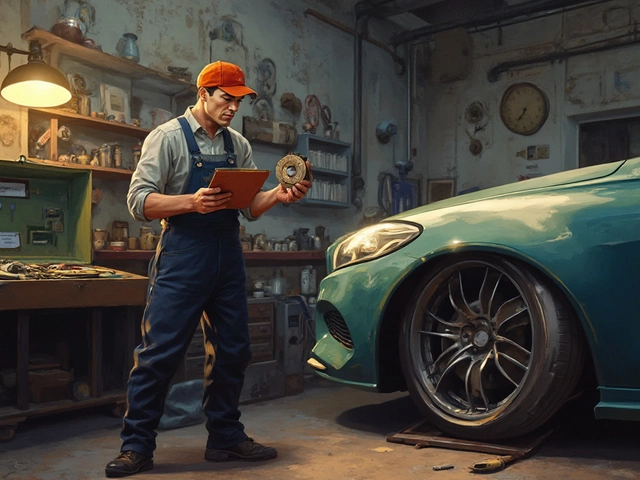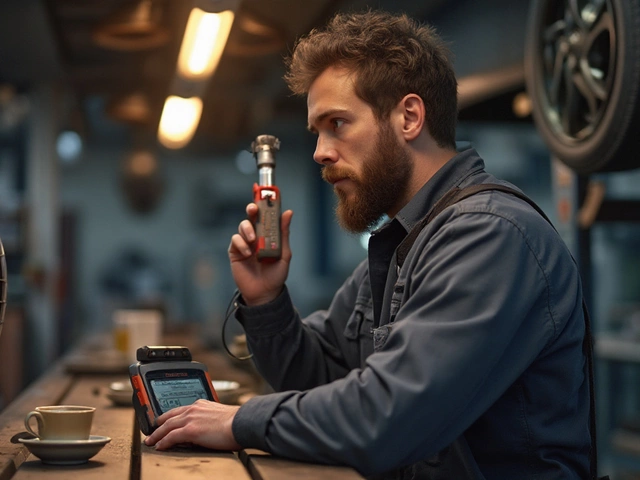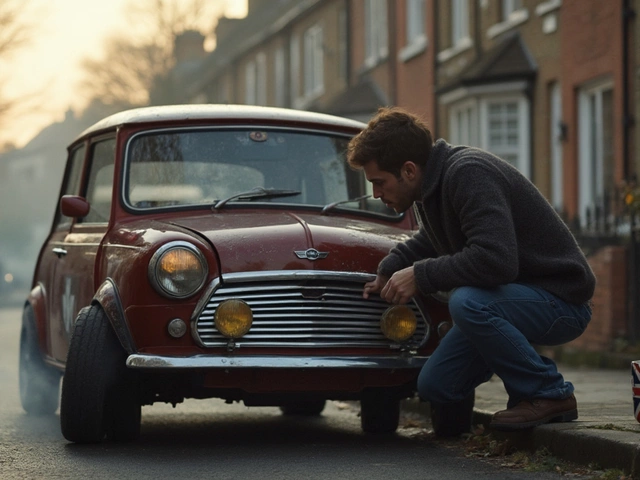Ever wonder if it's your brake pads or rotors acting up when you hear that squeal from your car? It's one of those nagging questions that pop up when you're cruising, and suddenly, the comforting hum of the engine is interrupted by a noise that just shouldn't be there. Let's talk about how to figure out if it's the pads or rotors causing the ruckus.
First, think about how your car has been stopping lately. Have you noticed any changes? If your car is taking longer to stop or you feel like you’re pressing the brake pedal harder than usual, it's time to look at your brakes.
Squealing or squeaking when you brake is often a sign that your brake pads are worn out, but if you hear grinding, that might mean the rotors are starting to show some wear. The differences in these noises can tell you a lot about what's going on under there.
- Signs of Worn Brake Pads
- Symptoms of Bad Rotors
- Noise: What Your Brakes Are Telling You
- Physical Inspection Tips
- When to Seek Professional Help
Signs of Worn Brake Pads
When it comes to your car, brake pads are super important. They take a lot of heat—literally. So, knowing when they're worn out is key to keeping your ride safe and sound. Here are the top signs to watch for, so you don't find yourself in a sticky situation.
Squeaking or Squealing Sounds
That high-pitched noise isn't just annoying; it's a built-in alert system! Brake pads often have wear indicators that squeal when it's time for a change. So, if you're hearing that sound often, it's probably time to give those brake pads some attention.
Grinding Noise
Ever hear a grinding noise when you hit the brakes? That's usually a sign you’ve worn through the pads completely, and the metal backing is now scraping against the rotors. This is serious, and you should address it pronto.
Reduced Braking Efficiency
Are you finding that your car doesn’t stop as quickly as it used to? Reduced braking efficiency could mean your brake pads are near the end of their life. This is especially dangerous in emergency scenarios where you need every inch of stopping power.
Visual Inspection
If you're the kind of person who likes to see things for yourself, take a look at your brake pads. You can usually spot them through the holes of the wheel. If they're less than a quarter of an inch thick, it's a good idea to replace them.
"Regular inspections can save you more than just money; they can save lives." - John Smith, Automotive Safety Expert
Dashboard Indicator Light
Some modern cars have a dashboard light to alert you about worn brake pads. So if that light comes on, don’t ignore it. It's there to remind you to keep your brakes in top shape.
Keeping an eye—and an ear—out for these signs can keep you ahead of the game. Regular checks and staying aware of your car's behavior can make all the difference.
Symptoms of Bad Rotors
When it comes to diagnosing brake problems, detecting bad rotors is crucial. Bad rotors can lead to all sorts of issues, and it’s important to catch them before they get worse.
Understanding The Clues
One of the most noticeable signs that your rotors are acting up is a pulsation or vibration in the brake pedal. When you hit the brakes and feel a shaking or pulsation, especially under normal driving conditions, you might be dealing with warped rotors. The uneven surfaces of the rotors cause this shaking as they spin against the brake pads.
Another symptom to watch for is noises. While squeaking often points to worn brake pads, grinding or growling sounds can suggest your rotors have worn down too much. Grinding means the brake pads have likely worn down, exposing the metal beneath, which means metal-on-metal contact with your rotors.
Visual Inspection
Sometimes, you can't just rely on feel or sound. A visual inspection can reveal telltale signs of rotor damage. Look for visible grooves or score marks on the rotor surface. These are clear indicators that the rotor is unevenly worn.
When checking your rotors, make sure they're hot after a drive to accurately identify problems. If you notice any discoloration or bluish hues, it's a sign that they've been overheating.
What Happens if You Ignore It?
Driving with bad rotors isn't just risky; it's downright unsafe. Over time, damaged rotors can lead to less effective braking performance, potentially increasing stopping distances. Not something you want to gamble on when every second counts.
Regular checks and maintenance can catch issues with your rotors before they turn into a major headache. Spending a little time now will save you a whole lot of trouble down the road.

Noise: What Your Brakes Are Telling You
It’s amazing how much information your car can give you just through noise. When you hear those unexpected sounds, don’t just turn up the radio to ignore them. Paying attention to these noises can save you some hefty repair bills down the road.
Squealing or Squeaking
If you’re hearing a high-pitched squeal when you brake, chances are it’s your brake pads waving the white flag. Many pads are designed with a small piece of metal called a wear indicator that makes noise when it's time to swap them out. It's a handy little alert system built right into the pad.
Grinding Sounds
Now, if things have escalated to a grinding noise, you're probably dealing with more than just worn pads. This rough sound often means that the pads are so thin, they’ve allowed the metal caliper to grind against the rotors. This can quickly damage the rotor itself.
Clicking Noises
Do you hear clicking sounds when you press on the brake? This could be loose components in the brake system, like the pads not fitting snugly in the caliper. While this isn’t as immediately serious as grinding, it’s worth having it checked out.
Noise levels increase with speed, so listen during both city driving and highway cruising. If you’re unsure, have a professional take a look. Catching these symptoms early can prevent worse damages.
Physical Inspection Tips
So, you're ready to get your hands a little dirty and check those brakes yourself? Let's break it down into simple steps so you can have a look at what's going on. No fancy tools needed—just patience and attention to detail.
Step 1: Gather Your Tools
Before you start, you'll need a few basic things: a jack, jack stands, a lug wrench, and a flashlight. And, of course, your keen eye! These will help you get clear access and visibility to your brake pads and rotors.
Step 2: Remove the Wheel
Park your car on a flat surface and make sure it's securely lifted. Use the lug wrench to remove the wheel, so you can see what's happening with the brake components. Trust me, it's a lot easier than it sounds.
Step 3: Inspect the Brake Pads
Take a close look at the brake pads. You're checking for wear and thickness. A rule of thumb—if the pad thickness is less than a quarter of an inch, it's probably time for a change. Brake pads typically have a built-in indicator that squeals when they get too thin.
Step 4: Examine the Rotors
With your flashlight in hand, look at the rotors. You're looking for grooves or scoring, kind of like the rings in a tree trunk. If you can see or feel deep grooves, it might mean the rotors need resurfacing or replacing. If there's rust on the edges, that's usually okay, but any rusting on the main surface is a red flag.
Step 5: Spin the Rotor
Give that rotor a little spin (if you can). If it wobbles or makes noise while turning, you might have a warped rotor—a common problem that messes with car performance.
And just like that, you've done your first brake inspection! If things seem out of whack, it might be time to chat with a mechanic. Regular checkups can save you money down the road and keep you driving safely!

When to Seek Professional Help
At some point, you might need an expert's eye on those brakes. Let's face it, sometimes we just can't handle everything on our own, no matter how much we wish we could. If you're unsure about what to do next, consider getting a professional opinion.
Brake pads and rotors are crucial for safety, and messing them up could be a costly mistake. If you notice any severe symptoms, like a pulsing brake pedal or strange vibrations when you stop, let the professionals take a look. These could be signs of uneven rotor wear. Did you know that about 30% of brake-related problems stem from improper maintenance? So, don't hesitate to ask a mechanic.
Signs It's Time to Call the Pros
- Grinding or Growling Noises: If you've moved from squeaking to grinding, it could be a sign that your rotors are being damaged by metal-to-metal contact.
- Warning Lights: On many vehicles, the brake system is linked to warning lights. If you're seeing a brake light on your dashboard, it's definitely time for a professional.
- Thinning Brake Pads: When your brake pads are less than 1/4 inch thick, it's a solid indicator that replacement is needed, and a professional can ensure it's done right.
Don't gamble with your safety. Trust your instincts. If something feels off, it probably is. A check-up with a pro may save you from costly repairs or dangerous situations down the road. You know your car better than anyone, and when it speaks, make sure you're really listening.






